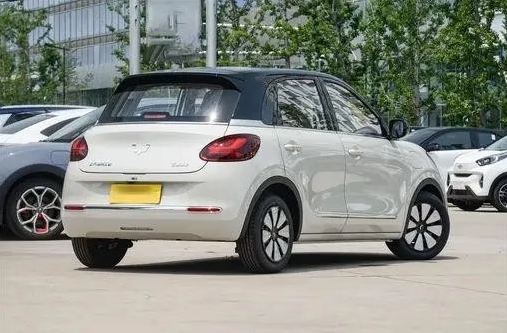The price dropped right after I bought the car, and the configuration was upgraded right after I bought it? There are many cases of “being ripped off” when buying new energy vehicles. The car was picked up one second, and the price dropped the next second, and there is no place to defend rights, so I suffered a dumb loss.
Many people have been hit, right? From the perspective of technology iteration, market competition, policy adjustment, and brand stability, it can be said that the changes are too fast?
So when buying new energy vehicles, are you afraid of being ripped off or being stabbed? I will analyze it from the following aspects to give you a bottom line!
- Battery and safety standard upgrade
Battery technology is about to be disrupted: 2025-2027 will be the key window period for battery technology iteration. Semi-solid batteries have begun mass production, and all-solid-state batteries are expected to be installed in 2027. The range can easily exceed 1,000 kilometers, and charging for 10 minutes can replenish 500 kilometers. It is very likely that liquid battery models may face technological obsolescence within 3-5 years. The new national standard implemented in July 2026 requires that power batteries do not catch fire within 2 hours under extreme conditions, while most current models only meet the “5-minute escape time” standard.
After the implementation of the new regulations, the second-hand market of existing models may depreciate by more than 20%, especially low-priced models with workshop-style battery assembly are at higher risk. - Price war exacerbates short-term depreciation pressure
In 2025, the price war of new energy vehicles continued to escalate, and some models frequently reduced their prices by 50,000 yuan within half a year of listing. Users who have just purchased a car may face a substantial depreciation in the short term.
The risk of brand closures is prominent: in recent years, more than a dozen brands such as WM Motor and HiPhi have gone bankrupt, and it is expected that 30% of new energy vehicle companies will withdraw from the market from 2025 to 2027. Niche brand models may face problems such as after-sales vacuum and shortage of repair parts, further exacerbating the risk of depreciation. - Policy dividends gradually decline
Subsidies and tax incentives countdown: In 2025, the new energy vehicle purchase tax exemption policy will still be fully implemented (up to 30,000 yuan), but it will be halved from 2026. After local subsidies (such as Wuhan’s maximum of 26,000 yuan) are superimposed on national subsidies, some models can enjoy a discount of more than 60,000 yuan, but the cost of purchasing a car will rise after the policy declines next year.
Infrastructure construction is accelerated: Guangzhou plans to build 400 battery swap stations by 2025, and 100% of new communities will reserve charging pile installation conditions. The national ratio of charging pile increment to new energy vehicle sales is 1:2.7, and charging convenience has been significantly improved. - The value retention rate is obviously differentiated, and the top brands and high-end models are more resistant to declines
The value retention rate of high-end models is outstanding: Due to leading technology, brand premium and stable price system, the one-year value retention rate of high-end models is significantly higher than the industry average. However, due to frequent price cuts or technological iterations, the value retention rate of popular models is relatively low. - Is it worth buying now?
If you buy a car for daily commuting and do not require high battery life (400-500km) and charging convenience, 2025 is still a good time to buy. Choosing mainstream models of leading brands (such as BYD and Tesla) can avoid the risk of brand bankruptcy, while enjoying up to 30,000 yuan in purchase tax exemptions and local subsidies.
If you pursue the latest technology, you can wait for the semi-solid-state battery model to be launched in the second half of 2025, or the all-solid-state battery model after 2027. These new technology models have significantly improved battery life, charging efficiency and safety, but they need to bear higher car purchase costs. Give priority to models with high ownership and a complete after-sales network.
At present, there are risks such as fast technology iteration and large price fluctuations in purchasing new energy vehicles, but it is not necessarily “cut leeks”. However, in terms of technology, it will be more or less affected, just like car computers are like mobile phones, and they are getting better and better, and the price changes will not be too big. The price war is almost over, and there is little room for decline. The only change is that the technology of 100,000-level cars is getting better and better.
















Leave a Reply